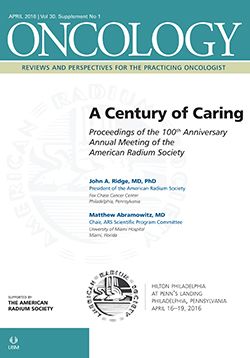(S002) A 15-Year Review of Radiation Therapy for Keloids at Two Institutions
For many individuals, keloids present a symptomatic and cosmetic issue after tissue injury. Surgical excision followed by immediate adjuvant RT provides excellent local control and cosmesis with minimal toxicity. Treatment with both prescribed regimens yielded equal results.
Paul B. Renz, DO, Mark Trombetta, MD, James Fontanesi, MD; Allegheny General Hospital; Botsford Cancer Center
INTRODUCTION: Keloids are a process of overactive wound repair after a resultant injury and affect people of all ancestries-in particular, African, Asian, and Hispanic populations. Pathologically, the keloids progress from a robust inflammatory reaction and tissue remodeling, with disordered fibroblast proliferation, cytokine production, and collagen deposition. Patients can experience symptoms of pain, pruritus, and physical deficit due to contracture. Keloids also cause significant cosmetic and psychosocial issues. Accordingly, most patients seek treatment for symptomatic keloids. Intralesional injection, silicone gel sheets, and pressure therapy are conservative treatment options; yet, often, patients need excision for symptomatic relief and cosmesis. However, surgical excision alone can result in an insidious cycle of tissue injury and repeat keloid formation unless combined with adjuvant therapy to halt this cycle. Postsurgical radiation therapy (RT) is effective in preventing redevelopment of keloid. We present our results on postoperative RT for keloids at two institutions.
METHODS: A retrospective review of the records at two academic institutions from 2000–present was conducted. A total of 107 patients were treated to 201 total sites. Patients had surgical resection followed by adjuvant RT initiated within 24 hours of surgery. Two dosage schemes were utilized: (1) 1,200 cGy in three fractions of 400 cGy and (2) 2,000 cGy in five fractions of 400 cGy. Patients were analyzed for local failure, defined as redevelopment of keloid necessitating retreatment.
RESULTS: Overall, there were eight (4%) local failures, with three in the 1,200-cGy arm and five in the 2,000-cGy arm (chi-square test, P =.94). Treatment failures were associated with overall size of keloid and location (pinna or areas of increased skin tension). There were no treatment-related toxicities or secondary malignancies.
CONCLUSIONS: For many individuals, keloids present a symptomatic and cosmetic issue after tissue injury. Surgical excision followed by immediate adjuvant RT provides excellent local control and cosmesis with minimal toxicity. Treatment with both prescribed regimens yielded equal results.
Proceedings of the 98th Annual Meeting of the American Radium Society - americanradiumsociety.org
